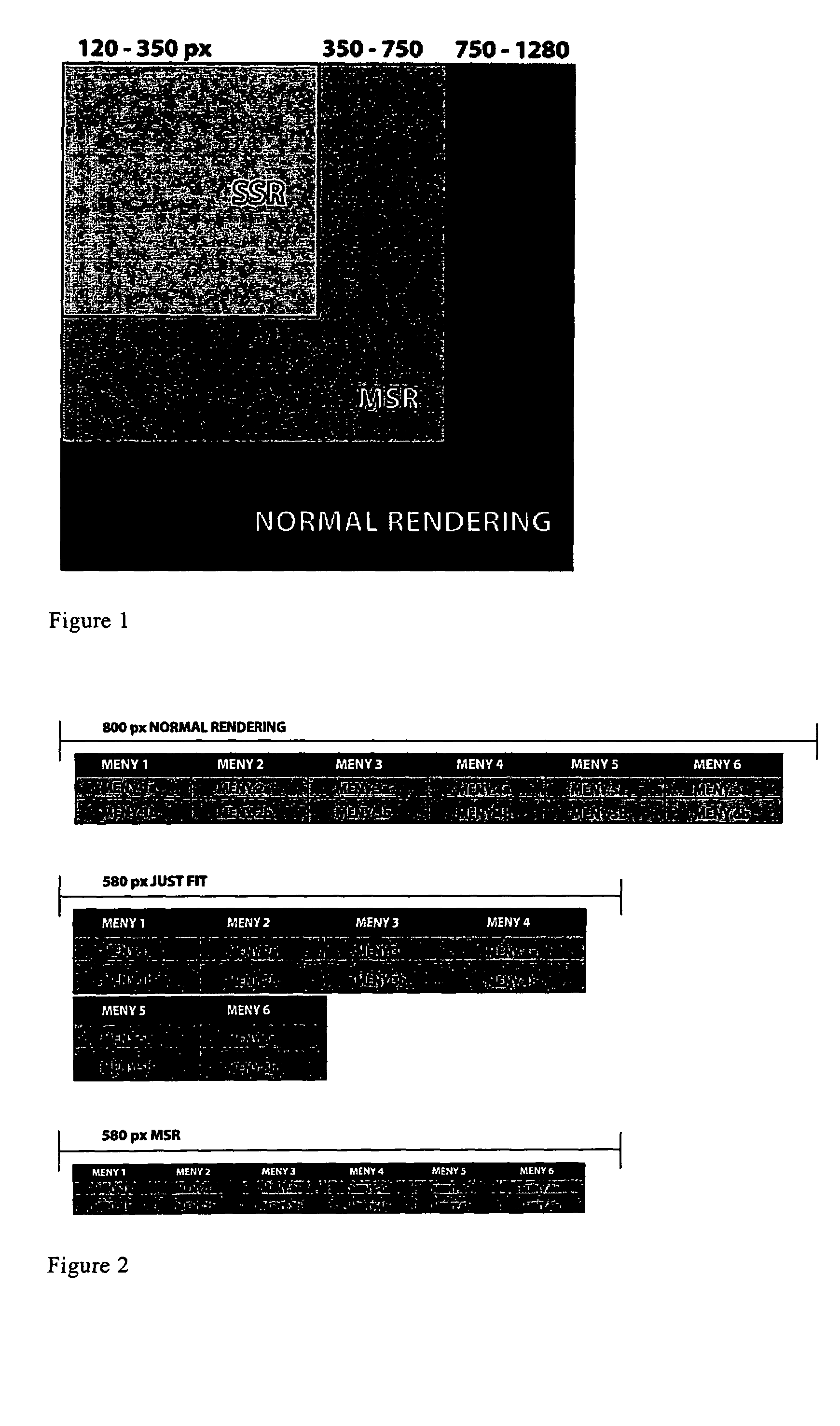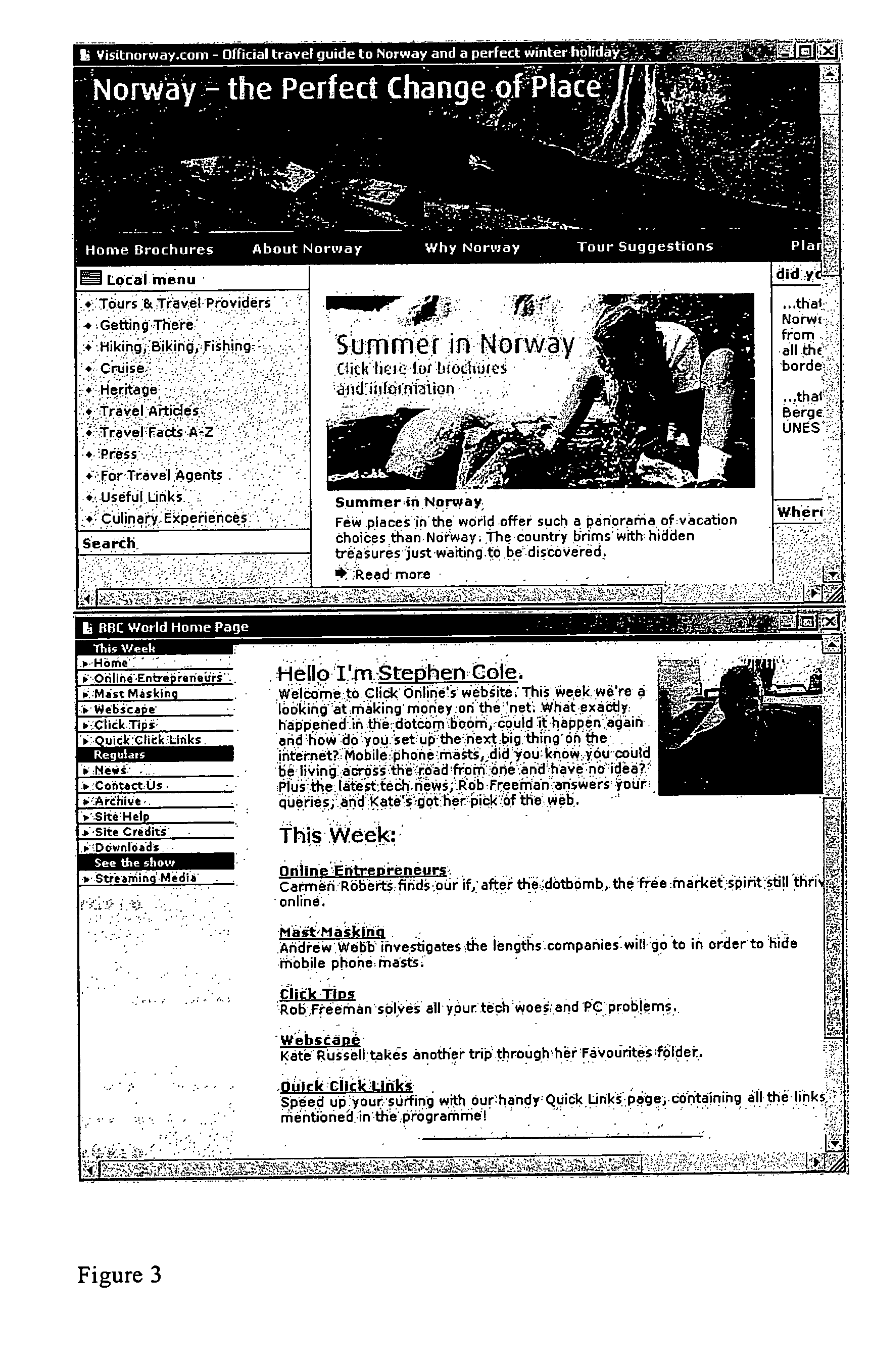Presenting HTML content on a screen terminal display
a terminal display and html technology, applied in the field of data processing for displaying information on electronic communication terminals, can solve the problems of small devices with smaller resolutions (screen sizes) and therefore cannot render most such web pages, and ssr therefore works well, and ssr is not a good solution
- Summary
- Abstract
- Description
- Claims
- Application Information
AI Technical Summary
Benefits of technology
Problems solved by technology
Method used
Image
Examples
Embodiment Construction
[0038]FIG. 1 is a diagram showing screen sizes in pixels and a typical rendering method.
[0039]Small-Screen Rendering (SSR) is typically used on electronic devices with a screen resolution between 120 to 350 pixels, for example smart phones.
[0040]Medium-Screen Rendering (MSR), which is the method according to the present invention, is intended for use on devices with a screen resolution between 350 and 750 pixels, e.g. PDAs.
[0041]Normal rendering is used on devices with a screen resolution of more than 750 pixels, for example PCs.
[0042]FIG. 2 shows three different examples of rendering methods and the resulting presentation. The first example shows how a typical menu, if it consists of a line of non-breaking images contained in a single table cell, is presented as intended on a display with 800 pixels.
[0043]The next example shows how the same menu will look when using the “Just Fit” method to render the Web page on a display only 580 pixels wide. This method will introduce line break...
PUM
 Login to View More
Login to View More Abstract
Description
Claims
Application Information
 Login to View More
Login to View More - R&D
- Intellectual Property
- Life Sciences
- Materials
- Tech Scout
- Unparalleled Data Quality
- Higher Quality Content
- 60% Fewer Hallucinations
Browse by: Latest US Patents, China's latest patents, Technical Efficacy Thesaurus, Application Domain, Technology Topic, Popular Technical Reports.
© 2025 PatSnap. All rights reserved.Legal|Privacy policy|Modern Slavery Act Transparency Statement|Sitemap|About US| Contact US: help@patsnap.com



